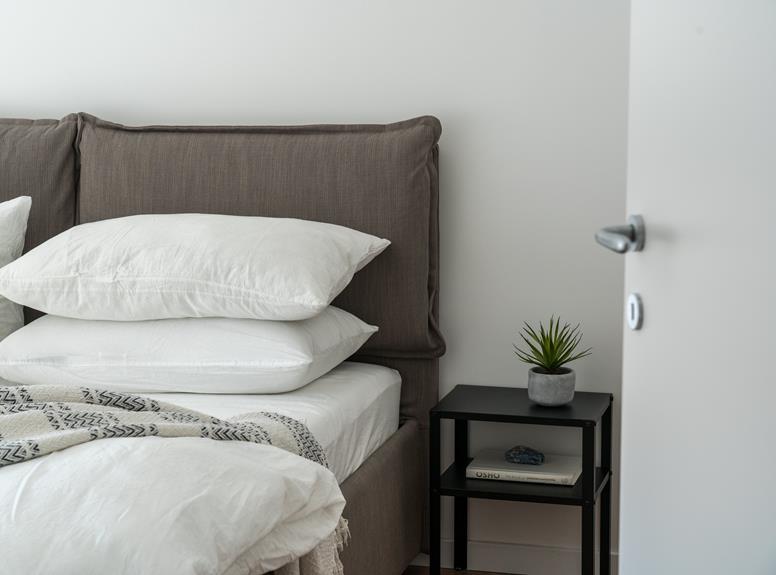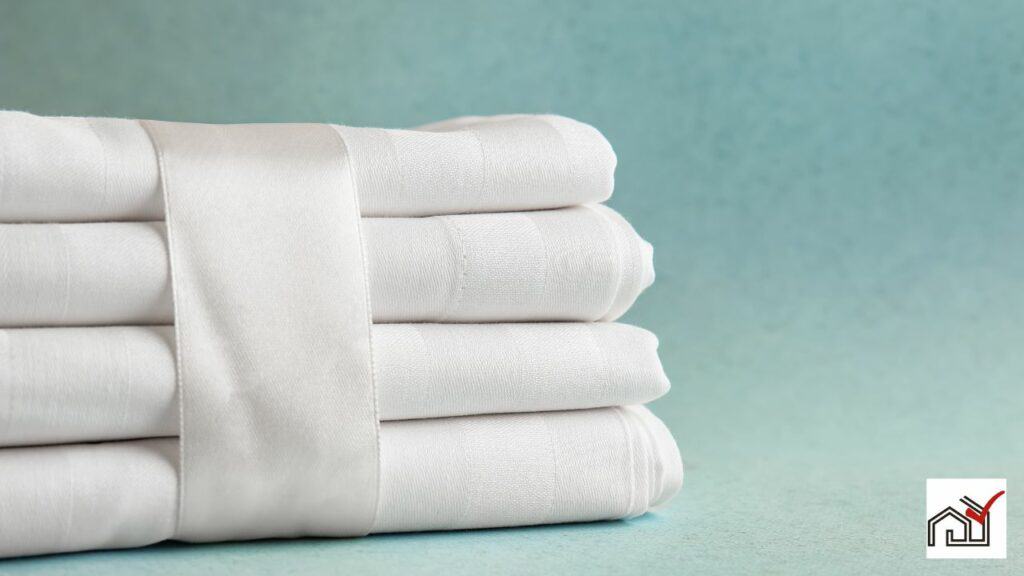White comforters can become dull and discolored over time. To whiten a comforter, first check the care label for cleaning instructions.
Pre-treat any stains, use a mild detergent, and add baking soda and vinegar to the wash for natural whitening.
This guide covers washing methods, additives to brighten the fabric, and advice on drying and upkeep to maintain the comforter's whiteness.
Pre-Wash Inspection Tips
Regularly inspecting a white comforter for stains and discoloration is important to maintain its appearance. Before washing, check for body oils, sweat, and other marks that may have become embedded in the fabric. Early detection allows for more effective cleaning, which can extend the comforter's life.
Focus on the edges, corners, and center of the comforter during inspection, as these areas are prone to stains. If stains remain after washing, consider using a stronger treatment or a different cleaning method.
If your current whitening process is complex, try simplifying it to save time without compromising on results. For example, if you're using a stain remover that requires a long soaking time, find a faster-acting alternative.
A straightforward and effective whitening routine, including regular pre-wash inspections, will help keep your comforter white and prolong its lifespan.
Choosing the Right Detergent
Selecting the right detergent is crucial for keeping a white comforter clean and bright. Detergents made for white fabrics can enhance the brightness of the fabric without damaging it. They often contain optical brighteners that make the fabric appear whiter.
The ingredients in the detergent matter. Baking soda, a natural cleaner, can clean, deodorize, and brighten fabrics gently, and it can make detergents more effective due to its pH-balancing properties.
Pre-treating stains before washing helps maintain the comforter's whiteness by addressing stains early, which can reduce the need for rewashing and thus protect the fabric. Using a whitening booster like OxiClean or Borax every few washes can help prevent dinginess and yellowing.
Pretreatment for Stains
Pretreating stains on a white comforter is important for maintaining its appearance. Use gentle alternatives to bleach like lemon juice, baking soda, and white vinegar to avoid damaging the fabric. Quick action is crucial. Blot stains instead of rubbing to prevent them from setting in. For white fabrics, use a mild laundry detergent designed for them to help remove stains without harming the material.
Lemon juice can naturally bleach stains when exposed to sunlight. Baking soda, a mild abrasive, helps to remove and absorb stains with its deodorizing properties. White vinegar, due to its acidity, can also effectively break down stains.
To pretreat, apply the chosen substance directly to the stain and leave it for a few minutes before washing. For tougher stains, a paste of baking soda and water or a mix of lemon juice and salt can be left on the stain for an hour or overnight. Be careful with these treatments and rinse well before washing.
Whitening With Household Items
Household items like baking soda, white vinegar, and lemon juice can be used to naturally whiten a comforter, offering a less harsh alternative to bleach.
Baking soda, when added to the laundry, enhances detergent cleaning power and deodorizes.
White vinegar, used in the rinse cycle, removes detergent residue and softens fabric.
For more stubborn stains, adding OxiClean or Borax periodically can improve whiteness.
Regular use of these methods can achieve bright results without harsh chemicals.
Washing in cold or lukewarm water and drying on low heat helps preserve white bedding.
Proper Washing Techniques
Separate your white comforter from colored items to prevent color bleeding.
Check for stains and apply stain remover before washing.
Use cold or lukewarm water and choose a gentle cycle to wash the comforter with a mild detergent designed for whites.
Do not wring the comforter after washing.
Dry it on a low heat setting and remove it from the dryer while slightly damp to air-dry fully, reducing wrinkles and preserving its fluffiness.
Regular maintenance will keep your comforter white and prolong its lifespan.
Drying and Maintenance Tips
Dry your white comforter on a low heat setting to avoid shrinkage and fabric damage. Avoid high heat, as it can weaken fibers and diminish the comforter's whiteness and lifespan.
Vacuum the comforter regularly to remove dust and allergens, keeping it clean and fresh.
Store the comforter in a cool, dry place away from sunlight to prevent yellowing. Use breathable storage solutions to protect against moisture and mildew.
Rotate the comforter on your bed periodically to ensure even wear and extend its life and appearance.





